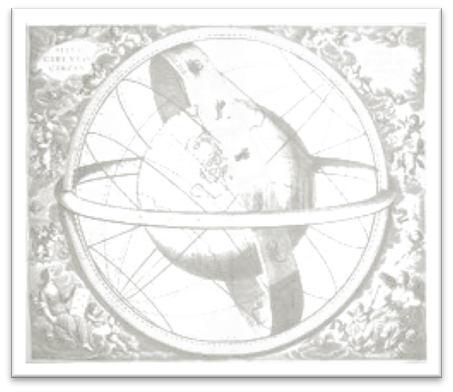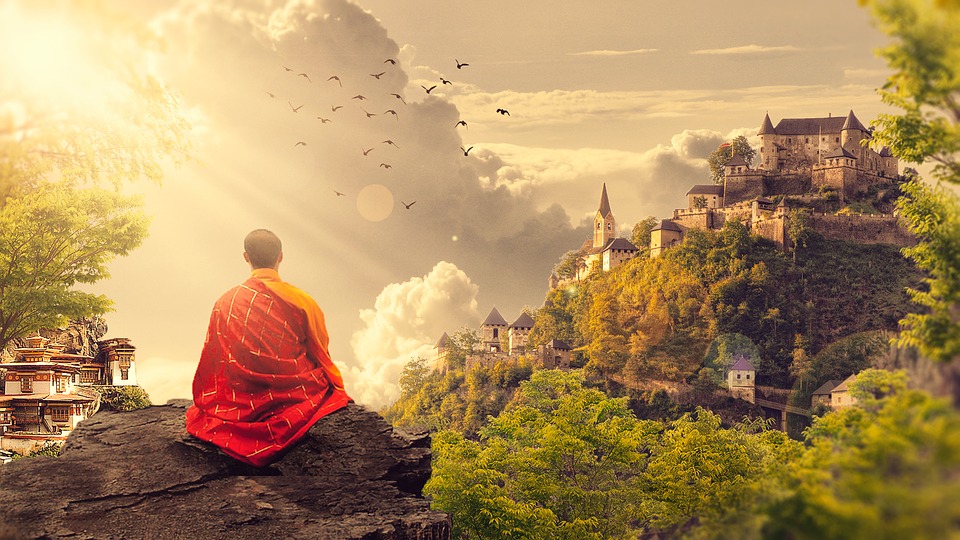
The Traditions of the Royal Art
Where alchemy truly began is a mystery. Alchemy is a 2000 year old international tradition, spread across India, China, Egypt, the Near East and Western Europe. The origins of the alchemical tradition reach back into ancient Alexandria, Egypt in the West and Ch’in Dynasty China in the East. It is unknown whether alchemy arose independently in the Orient and the Occident or if it was passed from one half of the earth to the other.
Where the alchemists of the West maintained holistic philosophies like those of the East, only the Eastern physicians perpetuated a holistic world-view, while Western medicine developed only scientifically and technologically.
Only in recent history has the West reconsidered its priorities, borrowing from the Asian traditions to compile a “preventative” or an “alternative” medicine. Likewise, the East has benefited greatly from its study and practice of Western scientific medicine.
No single school of alchemy has existed continuously from ancient times. The oldest continuing school is the Celestial Master sect in China, which arose in the second century CE.
The largest and oldest surviving alchemical society in the West is the Masonic fraternity, with lodges formed in the late Middle Ages (the period loosely between the 5th to 15th centuries).
The first records of the making of a Freemason are those of Robert Moray in 1641 and Elias Ashmole in 1646. The first Grand Lodge of Freemasonry arose in London, England in 1717, and today there is a at least one Grand Lodge in most countries around the world.

Symbolic Alchemy
In both Chinese Daoist alchemy and the Western Royal Art, two distinct interpretations of alchemy have developed over time: ‘external alchemy’ (Mandarin waidan) and ‘internal alchemy’ (neidan). ‘External alchemy’ is the literal interpretation, producing and consuming herbal recipes, pills, powders and elixirs with the intention of cultivating life and longevity or achieving physical immortality. By contrast, ‘internal alchemy’ is a path of meditative cultivation.
Internal alchemy is also known as inner alchemy or symbolic alchemy. The practice includes some combination of strict moral discipline, a regimented or healthy diet, and specialized exercises. These efforts are designed to nourish and purify spirit, called quintessence or life-force. Life-force, in this context, is not a pseudo-scientific form of energy, but simply a convenient term to indicate the whole of all aspects of health.
Symbolic alchemy often includes breath control, meditation, visualization, moderation of carnal practices, and physical exercises. It therefore aims to nurture and prolong life, but only incidentally. As exemplified by C. G. Jung’s analytical psychology, symbolic alchemy is a form of therapy.
Quite unfortunately, the science of chemistry mixed with mystical speculation has invited many superfluous, fantastic, superstitious and even fraudulent practices throughout history. Operative alchemy, or practical chemistry, led to the origins of modern science.
Speculative, or symbolic alchemy, became a major influence on the magicians of the Renaissance and their spiritual heirs, the Rosicrucians, Freemasons and other Western occultists. To be effective, symbolic alchemy must align with science; and to be useful, science must align with symbolic alchemy.
Science, from the Latin scientia, meaning “knowledge,” was anciently known as natural philosophy. It is a rational worldview that tests ideas thru physical demonstration, makes predictions about events within the order of the cosmos, and systematically organizes its knowledge into a body of literature.
Science without the Royal Art is in itself a method of observation, a form of understanding, and a source of wisdom. However, science fails to coordinate its vast stores of information into a comprehensive catalog, a holy scripture, so to speak. It also fails to provide any particular lifestyle or social order. Therefore, modern science falls short of being a wisdom tradition in its own right.

Solve et Coagula
The layman will not need to comprehend the following description of the alchemical tradition. He or she will not need to learn complicated definitions or procedures. Essentially, the Royal Art is meditation that separates natural quintessence from matter, order from chaos, and joins them together again into a pure, harmonious and benevolent whole.
This is the essence of the Latin alchemical motto Solve et Coagula, which means to dissolve and coagulate, or separate and join. The profane material is transformed by an ancient and eternal operation. It is first destroyed and then it is reborn as something noble and worthy. The process can be assisted with ritual and props but it takes place entirely within the mind. The Royal Art is a method of improving the mind.
Seventeenth century European alchemists, in emulation of the “Great Architect,” labored to unite the opposites, the purified Microcosm (the Moon) with the Macrocosm (the Sun), to produce a spiritual child, a unified and balanced whole (Mercury). The Moon and Sun as Salt and Sulfur are united to produce Mercury in the Chymical Wedding.
Mercury is a pure “mystical child” in a cosmic rebirth of the crowned and conquering king, the Son of Heaven, the Cosmic Human or inner guide. Some might consider this to be a “Supreme Being” or an anthropomorphic expression of such a concept. Others view it as a measurable state of being produced by a ritual initiation, meditation or heightened awareness.
In meditation the alchemist goes beyond effort, bliss and self-awareness, to a state of no-mind. No-mind, Chinese Wu Nien, is stillness of mind – not absence of mind like inanimate objects – but true self in pure form. The alchemist practices the method of internal alchemy in his cultivation of no-mind; controlled and relaxed guided visualization that leads to the union of microcosm and macrocosm and return of everything to the void.

The Elixir of Life
The meditation of symbolic alchemy can be learned within an hour. Visualization has been shown to allow for clarity and objectivity, stress relief, improved satisfaction in personal life and enhanced performance in mental and physical skills.
As a form of stress management, health benefits of the Royal Art can include: a stronger immune system, a healthier heart and improved blood pressure, enhanced memory, and weight loss. Meditation can help relieve anxiety and depression, improve relationships and contribute to a longer life.
Alchemical meditation also helps reduce mental and physical pain in healthy individuals as well as those struggling with disorders or rehabilitating after chemotherapy or surgery. Of course, every intelligent alchemist is a skeptic, and will make his or her own investigations of a wide range of sources. For sources of information regarding the above claims, see this article on visualization.
The goal of the Chinese alchemist is to produce the elixir of life, the dew of immortality, Cinnabar or Mercury, which may be made into a pill to be digested. This process, or Way of life, is comparable to the Western alchemical Great Work, the creation of the mercurial elixir or alchemical powder of the sun, the Philosopher’s Stone.
This operation creates, in the language of alchemy, a spiritual fetus, astral body or invisible body, which allows the alchemist to travel to unexplored territories of the psyche, and opens the doors of perception to new dimensions. It is a way to commune with one’s inner guide or true self whilst in the flesh.
The alchemist reunites with the “profane” world and polite society in order to improve or “spiritualize” his own environment, and will withdraw into meditation or pure observation again, in an endless cycle. This is the perpetual process that underlies alchemical immortality or illumination.

The Way of the Royal Art: Alchemical Symbolism
The Royal Art, known technically as symbolic or speculative alchemy, is the eternal art of transformation. It is called royal because it is the supreme profession, encompassing the philosophy of nature, the art of life, and the science of government. In illumined circles it is the art of doing nothing.
By definition alchemy is the transmutation of the base metals lead and iron into the noble metals silver and gold. The alchemist’s quest is for the pill, powder or elixir that turns every metal it touches into gold – the mysterious Philosopher’s Stone. This quest is a fitting metaphor for the science of transmuting base matter, the dross of mundane existence, into health, empowerment and enlightenment. The stone of the philosophers is the alchemical Holy Grail.
In Chinese alchemy, as in the first Royal Art Society process, the elixir or “medicine” of visualization is prepared in an area around the spine of the body called a “furnace” or “incense burner.” The “firing process,” is purification or refinement. The Spirit is withdrawn into Spirit, or void, into no-mind, where the “spiritual embryo,” the true self, is born, and life-force may be cultivated. In Chinese Daoist terms the Spirit unites with Dao (the source of existence and the “Way” or “Path” of life).
The alchemist studies and practices the Way of governing one’s own desires and emotions. An alchemist will “set up a ruler” over himself, communicating with his inner guide, the seed of his spiritual development. Self-mastery, guided visualization and meditation cultivate the mind’s inherent power and genius. This is one way to strengthen one’s will and harmonize it with nature. The alchemist learns how to control his or her own rewards and punishments with positive and negative reinforcement.
Alchemical rituals are not necessarily meant to be performed. They are designed as guided visualizations that lead the alchemist through the inner alchemical process. They may also be read aloud or chanted. These ‘Mystery rites,’ or meditations, exist on paper or digitally as bare essential prototypical rituals, which readers of every major culture can recognize and identify as unbiased and universal to humankind.
If the Royal Art is not your cup of tea, you may yet find some singular sustenance in the story of this vast, ancient and profound school of thought.
